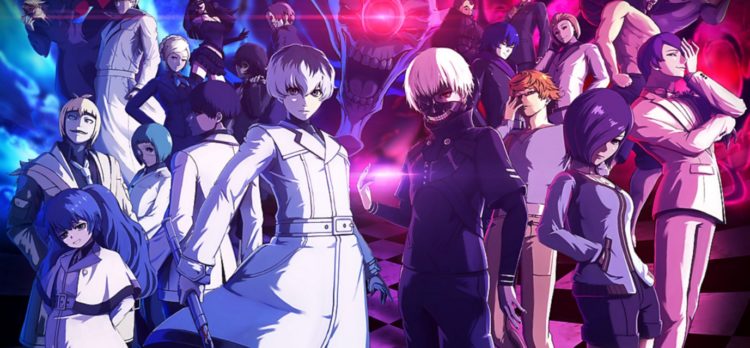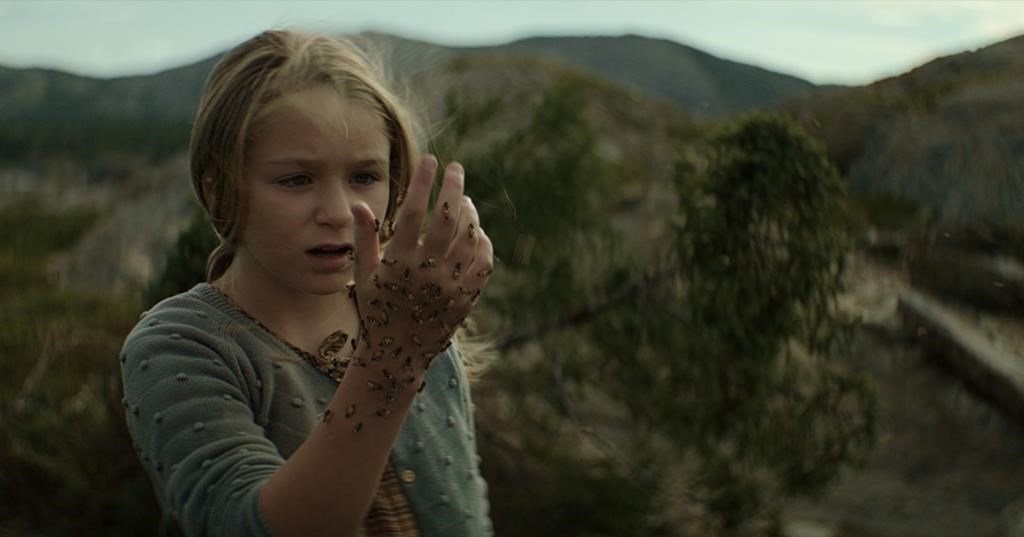Reviews
[Review] ‘Tokyo Ghoul:re [Call To Exist]’ Is a Flawed Experience That Even a Hardcore Fan May Find Tough To Enjoy

Tokyo Ghoul is one of the most exciting and emotionally rich anime of the past decade. Following protagonist Ken Kaneki, the series takes place in a world inhabited by “Ghouls;” these are beings who feast on human flesh. While not every ghoul is violent or evil, there is a rift between them and humankind. Kaneki is a unique hybrid of Ghoul that is still part human and strives to protect his loved ones from the war between humans and Ghouls.
With all of Tokyo Ghoul’s popularity, it was only a matter of time until we saw a video game adaptation in the west. Tokyo Ghoul:re [Call To Exist] is a re-telling of the series, including events from season one and its following seasons, Tokyo Ghoul √A and Tokyo Ghoul:re.
The narrative sticks to that of the anime source material, covering major plot points and glossing over the anime’s overall story. Die-hard Tokyo Ghoul fans will be able to follow along, but for those unfamiliar with the show, additional viewing will be required to understand the full emotional context of the plot and its characters. Ironically, the unlockable story details are super helpful to provide that context.

[Call To Exist] primarily utilizes still images in a slideshow-esque manner to convey its narrative; there are cutscenes that take place during missions, but they offer minor kinetic action. For an anime with stellar fights, this makes for a total bore and letdown. Other anime games like the Naruto Ninja Storm series have recreated iconic fights in beautiful detail; so it’s a shame given the haunting atmosphere and adrenaline of Tokyo Ghoul that the game doesn’t display that sense of ferocity. Also, these cutscenes will depict “fights” by turning the screen black and emitting smacking and slashing sounds as blood splatter appears. This is horribly tacky, and even more confusing as to why this means of conveying battle was chosen over actual animated fighting.
In Dynasty Warriors-like fashion, the player moves their character along a linear path, cutting through and beating down waves of enemies. At times, one may need to find items to complete a task – but the primary focus is on fighting enemies. There are a slim number of enemy types, such as infantry grunts, tanks, and more powered up beings. Of all enemy encounters, boss fights provide a welcoming challenge. However, battle requires little strategy outside of evading attacks and swooping in to land a blow. A stamina bar is present and represents one’s ability to use dashes and more powerful moves. The longer one fights, the more they’ll increase their “Awakening Gauge”, allowing for a super attack once full.
Throughout the game the player has the ability to take control of multiple characters. While the main story focuses on Kaneki, additional characters are found in the side story options. Upon completing certain missions, an option will become available to replay it from a different character’s perspective. From Touka Kirishima to Koutarou Amon and others, the game provides a nice variety in its cast. For the most part, each character also feels different; some excel better at hand to hand combat, whereas some are more suited to long-range attacks. Each character fits into one of three classes – these consist of Ghouls, Doves, and Quinx. From Ghouls being able to self-heal, to Doves and Quinx being able to use different weapons, each class has something unique to offer.

On a technical level, the camera can get in the way of the player’s view. This becomes a problem when loads of enemies are on the screen. However, what really hurts [Call To Exist] are all its mini cutscenes. The game is constantly stopping to show another cutscene of enemies arriving. There are many moments where a player will defeat a wave of enemies, only to have a cutscene pop up displaying the arrival of more enemies; they will defeat those enemies, take a few steps, and then another cutscene will appear. This issue establishes a dragging pace, chipping away at the story’s excitement.
Outside of the single player story, [Call To Exist] offers a variety of multiplayer options, including a Horde mode, a co-op story mode, and PVP battles. In all these modes, the player is able to make a customized character. [Call To Exist] may not have the deepest character customization, but from the various clothes and item options, it does allow the player to create an avatar that looks like they popped out of the Tokyo Ghoul world. PVP matches boil down to bombastic, yet simplistic brawls. They essentially follow the same flow as combat found throughout the game’s story – dash in and attack, evade, dash in when the time is right and repeat. Other than the ability to play as characters from the show or as a custom character, the gameplay becomes too repetitive to hold up excitement.

With its dragging pace, awkward cutscenes, and passable additional content, Tokyo Ghoul:re [Call To Exist] barely holds it on with its own thanks to the action. The story will certainly capture the excitement of fans, while others may have issues getting totally on board. For such an awesome anime, Tokyo Ghoul:re [Call To Exist] barely holds on thanks to the action.

Tokyo Ghoul:re [Call To Exist] review code for PS4 provided by the publisher
Tokyo Ghoul:re [Call To Exist] is out now on PS4 and PC.

Reviews
‘The King Tide’: An Island Town Rots with Moral Decay in Canadian Folk Horror Fable [Review]

The opening scenes of director Christian Sparkes’ The King Tide set an ominous tone: a powerful storm takes down the power lines of a small island town as a pregnant woman loses her child while her dementia-suffering mother sits nearby. In the morning, as the town takes stock of the damage and the power is restored, a surprising discovery is found in an overturned boat in the harbour: a baby girl…with the ability to heal.
Writers Albert Shin and William Woods, working from a story by Kevin Coughlin and Ryan Grassby, treat the story as something of a morality tale mixed with a fable. Following the cold open, the action jumps ahead 10 years at a point when the unnamed island (the film was shot in Newfoundland, Canada) is thriving. The fishing is bountiful, the islanders are self-sufficient and have cut ties with the mainland, and most everyone is happy.
As characters are prone to saying, it’s all thanks to Isla (Alix West Lefler), the miracle baby who has grown up worshipped by the islanders. While Mayor Bobby Bentham (Clayne Crawford) and his wife Grace (Lara Jean Chorostecki) endeavor to raise Isla like any other little girl, the reality is that the island’s entire ecosystem revolves around her miraculous powers. It is only because of Isla that they survive; every aspect of their lives – from medicine to food – relies on her.
Each day the citizens line up for their allotted time with the young girl – be it to stave off breast cancer, like Charlotte (Kathryn Greenwood), or recover from another night of heavy drinking like former doctor, Beau (Aden Young). There’s even a predetermined schedule for when she will go out on the boats and use her power to lure fish into the nets.

One fateful day, Bobby succumbs to peer pressure and alters Isla’s schedule at the last minute to accompany cod fishermen Marlon (Michael Greyeyes) and Dillon (Ryan McDonald). A childish game with fatal consequences is played, but with Isla indisposed, a young boy, who would have otherwise been fine, dies. And while the rest of the community grieves, it is Isla who is completely shaken and, unexpectedly, loses her powers.
Suddenly the entire balance of the island is thrown off. Folks like Grace’s mother, Faye (Frances Fisher), who relied on Isla to keep her dementia at bay, suddenly reckon with mortality, while the food security of the town is called into question. Faye’s late-night “support group” meetings take on an urgent and secretive tone and the townspeople claim ownership of Isla’s time despite Bobby and Beau’s protests that she needs rest to recover from her trauma.
Like the best thrillers, the politics and personalities within the community come into play as morals are compromised and the good of individuals vs the collective is played out in increasingly desperate situations. The King Tide excels because it is interested in exploring the competing motivations of the townspeople, while also resolutely refusing to paint anyone as inherently good or bad. These are desperate people, determined to remain independent and free from outside interference, while protecting their trapped-in-amber way of life.

These developments work because there’s a humanity to the characters and The King Tide wisely relies heavily on its deep bench castoff character actors to drive the conflict. Crawford is the de facto protagonist of the ensemble and he’s also the most straightforward character: Bobby is a good man and a loving father, but he’s no white knight. At several points in the film, his willingness to acquiesce to the demands of the community and retain his power causes events to spiral further out of control.
Even more fascinating are Grace and Faye, two commanding women whose capacity for maternal love is matched – or eclipsed – by their own self-interests. A mid-film discovery about Isla’s power reframes Grace’s priorities, ultimately pitting her against her husband. As a result, Grace is incredibly compelling and frustrating (in a good way) and Chorostecki, who has done great genre work on both Hannibal to Chucky, plays the moral ambiguity exactly right. Grace is a fascinating and flawed human character in a film filled with them.
The same goes for Fisher, who deftly balances Faye’s grandmotherly love for Isla with the needs of the community and, by extension, her own health demands. In the hands of a lesser performer, it would be easy to hate Faye for her actions, but Fisher’s performance perfectly captures the fierce determination and fear that drives the island’s matriarch.
Finally, there’s Aden Young, The King Tide’s secret weapon. The ten-year jump reveals that Beau has undergone the most significant transformation: while everyone else has benefitted from Isla’s powers, her presence has eliminated the need for a doctor. With the clinic effectively shuttered, Beau has become an alcoholic; a shell of his former self with no purpose.
Like Bobby, Beau is the easiest character to root for because of his selfless desire to protect Isla, but Young (renowned for his work with Crawford on Rectify) unlocks the character’s tragic pathos and, in the process, becomes the film’s emotional anchor.

Framing the moral decline of the islanders and anticipating the unexpectedly devastating climax is the natural beauty of Newfoundland. As shot by cinematographer Mike McLaughlin, there’s a steely beauty to the geography, resplendent with rocky cliffs, pounding surf, and gusty bluffs that reinforce the islanders’ isolation.
There’s a fierce pride in their struggle to survive independently, evident in the simple lodgings and the antiquated alarm bell that is rung whenever fishing ships from the mainland stray too close. It’s a chilly, atmospheric calling card for one of the most picturesque provinces in Canada, but it is a perfect complement for the folk horror narrative.
Armed with serene, beautiful cinematography, murky moral developments, and a deep bench of talented character actors, The King Tide is a quiet gem that demands to be seen. It’s one of the year’s best genre films.
The King Tide is in theaters April 26, 2024.














You must be logged in to post a comment.